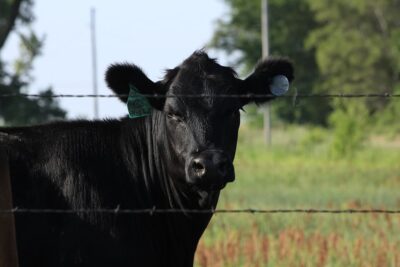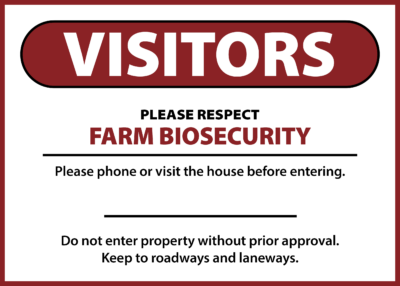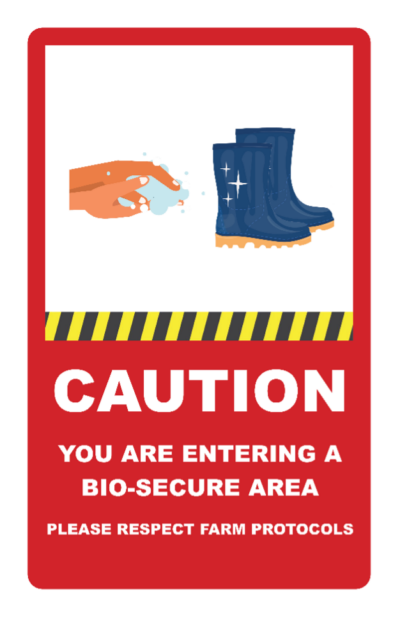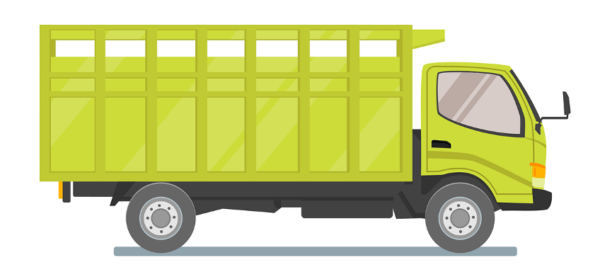Biosecurity Practices
Build a structure of security to protect your herd
Biosecurity is not a one-time single-step process. It is a dynamic activity that requires continuous evaluation and improvement along the way. Effective biosecurity practices might seem like a lot of work and investment, but it is a cost-effective way to secure strong and steady returns from your beef production operation.
First, check the health status of your cattle herd to determine whether diseases are present on the farm. Start with a healthy herd because an unhealthy herd increases the risk of infection.
Next, farms should adopt biosecurity plans. These plans ensure animal health and limit financial loss by enabling a business to continue if there is a disease outbreak in the area. The biosecurity plans should include functional, practical, and easy-to-tailor measures. There are two types of biosecurity: structural and operational.
Structural Biosecurity
When running farms, it is vital to design and develop a farm structure for robust biosecurity. Depending on the size and types of farms, several structures can be designed to prevent the spreading of diseases. Always consult a veterinarian or biosecurity officer to identify what meets your farm’s needs. Here are some examples of structural biosecurity measures:


- Gates and fences are the primary barriers for pasture rearing, alternative production, or semi-open and open housing systems. Fences can protect beef cattle from getting in contact with wild animals (e.g., feral pigs and deer) or other livestock (e.g., horses, sheep, and goats). Gates prevent the entry of unauthorized visitors and vehicles, which could be a primary source of diseases. Control who enters your property by limiting entry points and restricting farm access.
- Keep a digital or hardcopy logbook to track vehicles and people entering the farm.
- Inspect all perimeter fencing regularly and repair damaged areas to ensure your livestock stays in and straying livestock and wild animals stay out.
- Post signs within and outside the farm (legible, clearly written, visible, sturdy, and hung or pasted).


-
- Signs provide information on how people should act within and outside the farm. Within the farm, signs direct and guide the employees. Outside the farm, they help guide visitors and prevent accidental entry. Make sure you keep appropriate signs that let visitors know your biosecurity requirements as well as how to contact farm managers (e.g., phone numbers).
- Designated parking is required for both small and large farms to prevent the transmission of diseases onto a farm. Possibly contaminated vehicles (e.g., carcass disposal trucks, and feed trucks) should have separate entrances and parking areas to avoid cross-contamination between vehicles. Parking areas should always be away from the feed/bedding storage areas.

- Permitted access areas should be built for any visitors, farmers, or employees entering and exiting the farm.
- Perimeter buffer areas (PBAs) are controlled boundaries around farm premises to minimize potential disease introduction into the farm. An ideal setup ensures caretakers can perform their daily tasks within the PBA. The biosecurity plan must mark the PBA boundary.
Perimeter buffer areas should:- Be large enough to contain all the structures and areas related to day-to-day animal care.
- Have shapes that vary between farms (site-specific).
- Have designated entrances to direct traffic (access points).
- Have controlled access points that are marked with signs and protected with suitable barriers (e.g., cables, gates, ropes).
- Exclude residences and nonapplicable structures (e.g., machine shops).
- Have visual indicators to define the perimeter buffer area (e.g., landscaping, tree lines, fencing, gravel, grass cutting, cropland).
- Cattle handling facilities are used to separate individual animals from the rest of the herd for treatment. These facilities should have separate areas for vaccinations and routine health checkups.
- A line of separation (LOS) is a boundary between animals and their outer surroundings. An LOS helps avoid the spread of disease by preventing direct contact with other animals. An LOS can be building walls in a closed housing system or fences in open or semiclosed housing systems. A cost-effective LOS for small farms can be a fenced area around the animals that restricts the entry of unauthorized people to the area. Authorized animals, people, or items should only cross an LOS through clearly marked and controlled access points following appropriate biosecurity measures. LOS access points should be marked with signs in a language understood by all entering. All movements (animals, equipment, people) across an LOS should be recorded and available for review on request.
Operational Biosecurity
Everyday farm operations also need to be monitored to prevent disease outbreaks in herds and limit the spread of diseases within farms. Operational biosecurity must be implemented at every stage of production, from the day an animal is purchased to when it enters the farm and until it leaves the farm for sale. Because routine farm management practices influence operational biosecurity, it is divided into two parts:
- Internal biosecurity practices include measures to prevent disease spread within the farm through animals (disease spread from sick to healthy animals), pests, equipment, visitors, and farm employees.
- External biosecurity practices include measures to prevent diseases from entering the farm through animals, visitors, vehicles, equipment, wild animals, and other livestock.
What’s Next?
We learned about numerous structures that can be set up on a beef cattle farm. However, it is not essential to have all these structures for every farm. Some structures may not be required in certain situations. Consult a veterinarian or a biosecurity officer to identify which structures meet your farm’s needs.
